Starting Style from Scratch: Changing Seasons with Your Closet
The weather is changing, you're finding what's in your closet is starting to be wrong for the temps outside. Maybe you have out of season clothes packed away that you can pull out, maybe you need to start this new season from scratch. How do you transition your closet with the transitioning seasons? The next step of Starting Style from Scratch is changing seasons with your closet.
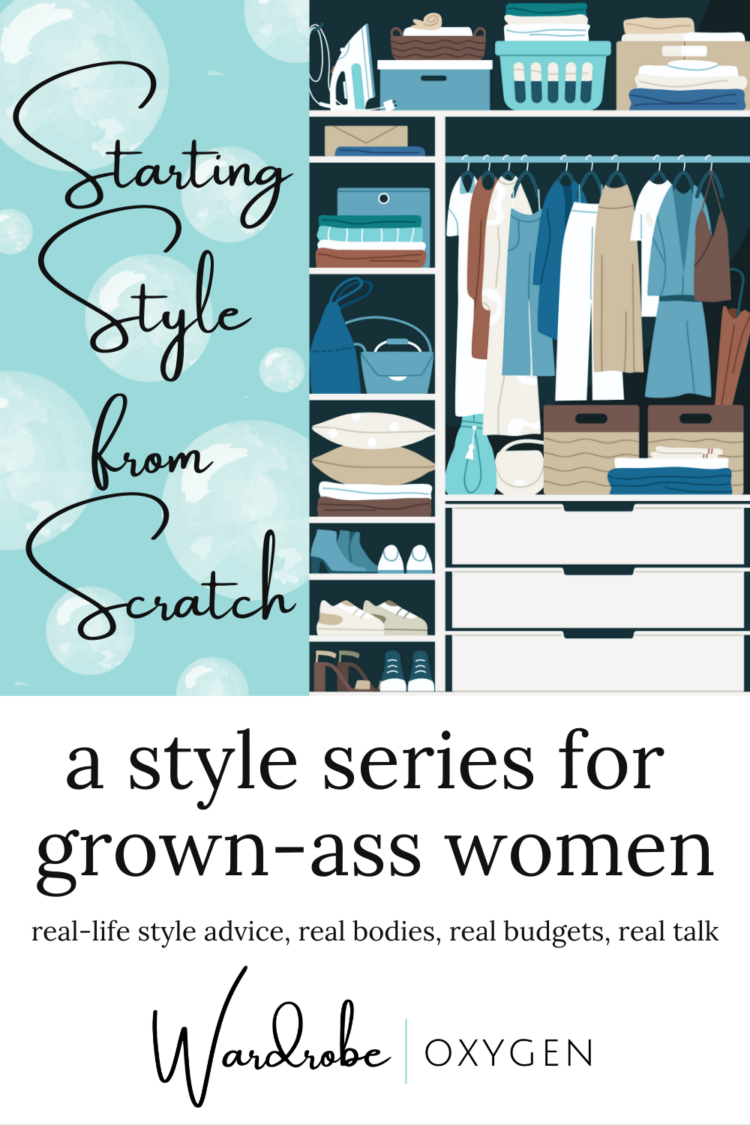
Changing Seasons with Your Closet
Retailers may do a sharp cut from corduroy and wool to linen and poplin and then from swimsuits to snowsuits, but real life isn't that stark. You may find a few pieces not quite right but others necessary as the year switches from winter to spring to summer, to fall, and back to winter. These transitionary times are the best time to do your closet audit and assess your situation for the coming months of temperature and seasonal change.
Living in the Mid-Atlantic part of the United States, the most significant weather transition periods are March, June, and October. Where you live, it may be other parts of the year. You know it's when the windows may finally be opened, when long pants feel like Saran Wrap, when bare ankles are uncomfortable and you need a light coat, and when you can't leave the house without a thick coat and hat. Just a few weeks before these times is when you should begin transitioning your closet.
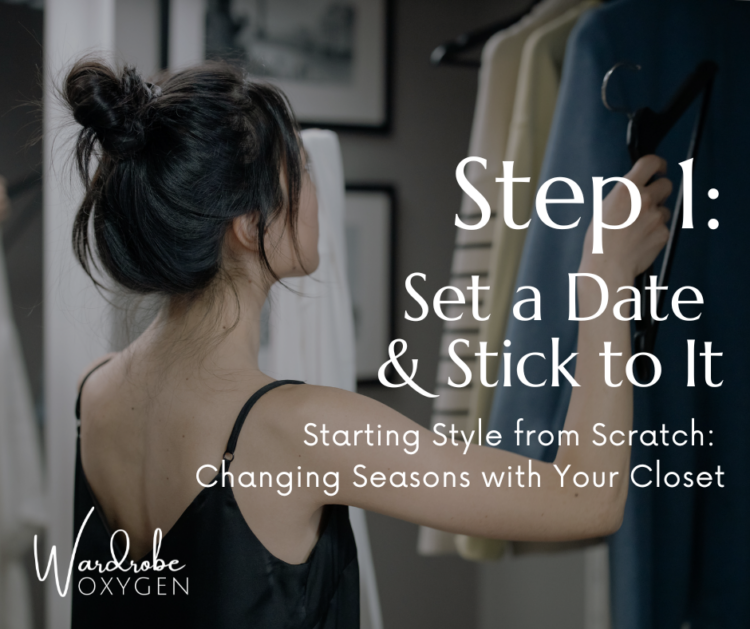
Step 1: Set a Date and Stick to It
I recommend looking at a calendar, figuring out when these times happen, and scheduling annual appointments on a weekend or known day off to do your transitional closet audit. Schedule it like a doctor's appointment, whether it's in your agenda book or an online calendar, and commit to it in the same manner.
When you schedule and commit to seasonal closet transitions, you save money. Have you ever found yourself suddenly in need of an outfit that may or may not be packed under your bed or in the attic, but there's no time, and maybe it fits, maybe it doesn't, so you go out and buy something new? I know I have, and that's why I now schedule these transition closet audits.
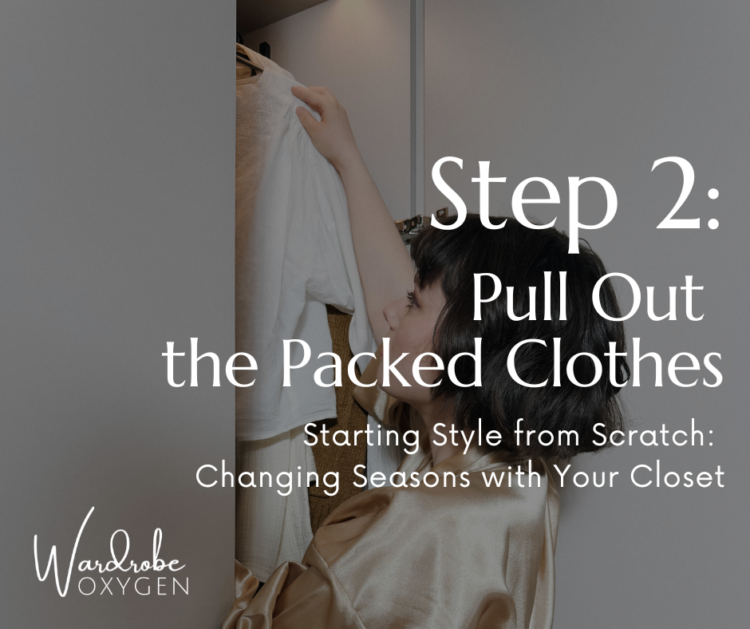
Step 2: Pull Out the Packed Clothes
For some, the pieces may be in the back of the same closet. For others, your out-of-season clothing may be stored elsewhere. Grab all of it, even if you pack separately items that may not fit your body or style at this point. This is also a great time to reassess those “future” clothes and see if they're still worth keeping.
- With both natural light and indoor lighting, check the condition of each piece you had stored. Are there set-in stains? Missing buttons? Snags? Be realistic and if they can be fixed, fix them. If they're beyond help, let them go. Grown-ass women don't wear damaged clothing and if you have enough clothes to do an audit like this, you have enough clothes to let this piece go.
- Here are tips from an expert on how to care for sweaters and knitwear
- This is my favorite stain removal recipe that sometimes even helps set-in stains
- To help get your packed clothes into wearable condition, check my tips on how to care for your closet
- A travel-sized or handheld garment steamer can easily de-wrinkle most wrinkles from packing
- For heavier items, a few minutes of air tumbling in the dryer can give a good refresh
- It's easier to assess style, fit, and condition when the item is wearable (and if you donate, you're doing a favor to the next owner)

Step 3: Time for the Fashion Show
While the previous steps could be completed throughout the week, this step requires a few uninterrupted hours. To prepare:
- If you style your hair or wear makeup, do it. If you usually wear earrings, add those too. Everything looks better when you've taken this time for yourself.
- Grab your favorite underpinnings and your existing shoe collection for this season.
- Also grab yourself your favorite beverage, a full-length mirror, and either your Notes app or a notebook and pen.
Now it's time for the fashion show. This is a time to keep reminding yourself it's the clothes, not your body that is the problem. You may find clothes you loved last year don't provide the same joy. You also may find meh clothes from 2024 are looking way better in 2025.
- If it fits but doesn't serve a clear purpose (for the job you have now, the wedding you're attending in June, the beach trip booked for August), set it to the side.
- If it doesn't fit, it doesn't deserve to be in your closet. If it's a fabulous piece and juuuust near fitting, you can keep it, but don't keep it in the closet. Consider a space bag or storage box in a convenient place, like under a bed or a high shelf in a closet, to be able to access it if things change.
- If it may fit with tailoring, determine if you like it enough and it's good enough of quality and purpose for the financial and time investment.
- If it doesn't fit, I don't care how much it cost, who gave it to you, or where you wore it last, it doesn't belong in your closet. See my advice on what I call sartorial security blankets.
- If you don't like it, let it go unless you need it (it's a uniform or a required style, and you don't have an alternative). The more you enjoy your clothes, the fewer pieces you need. Let go of anything that does not serve you well.
Know that a key point of style is knowing what you don't like. If you feel you're losing a chunk of your wardrobe with this step, realize you're gaining personal style and a greater chance of satisfaction, comfort, and joy when getting dressed in the future.

Step 4: Curating Your Collection
Now it's time to mesh the seasonal pieces that made the cut into your existing closet and remove those that are no longer appropriate for the weather.
Some pieces are super easy to know to pack up. For example, when I did this audit for winter to spring, I immediately packed up corduroy and wool pants, fleece-lined leggings and cold-weather activewear, turtlenecks, wool and sweater dresses, heavyweight blazers and suits, and the thickest sweaters. My snow boots, shearling-lined shoes and slippers, thick socks, and tights all went to the back of the closet and drawers, and my winter hats, gloves, and accessories were packed to make room for straw, cotton, and UPF-protecting options.
- Knowing what else to pack up is to take some time to play. You packed up your tweed trousers, which go with three different tops. Will those chinos work as well with those three things? How about the pants from that suit where the jacket feels wrong but they still feel right?
- Pretend you are a living Fashion Plate; keep on the same top or bottom and try at least three things from the other season to see if you can make workable outfits. Sometimes, that lightweight merino sweater or wool crepe dress that seems like a good transitional piece ends up looking really awkward with your spring footwear and separates.
- I shared ways to style long skirts in different seasons, but do you really own anything that makes your midi skirt look as good as that turtleneck and boots? Packing it up for next year is better than spending several weeks trying to find or buy something to make it work.
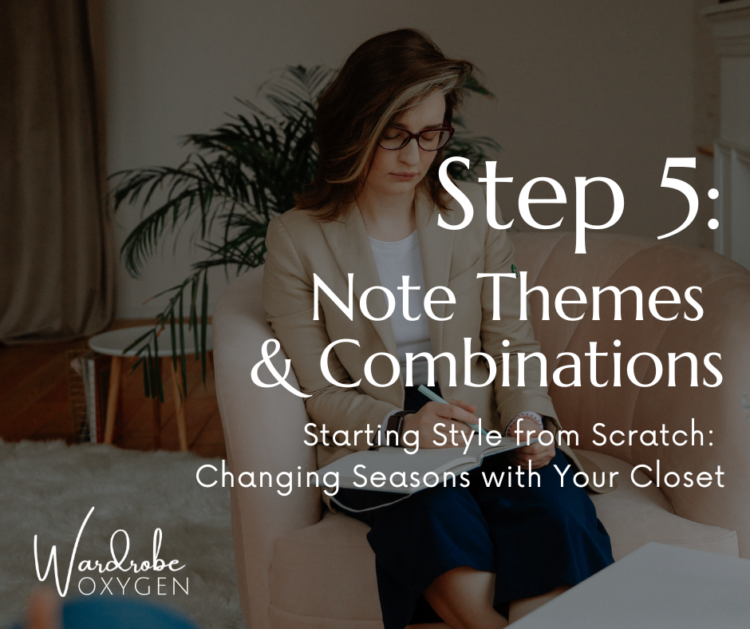
Step 5: Note Themes and Combinations
As you try these combos, note which ones seem to work. That cable-knit cardigan looks cute over that top and twill pants. Your t-shirt dress feels a bit too springy, but you like its vibe, especially with your tall boots and denim jacket. While the white linen pants feel too summery, those black linen pants look good with that striped sweater and black loafers.
Writing down these combinations reminds you of the versatility and options you already have at your disposal, so you have proof you don't need to buy a whole new wardrobe for the season.
Also, as you try on, see if there are any themes. Are you suddenly feeling the need for a belt for outfits where it didn't seem needed in previous years? Do your pants all seem too long, short, full, or narrow this year? Are you wishing you had more or less color? Do you feel like there are too many skirts when these days all you want are pants (or vice versa)? If things fit your body but still feel wrong, note the why and how.
This is not that your body has betrayed you or that your closet is a problem; it's that you are changing and acknowledging your growth. There is this fantasy that you can buy “classics” and keep wearing the same thing decades later. But honestly, no one's body stays exactly the same, and hopefully, you aren't the same person you were decades ago. Embrace this change; change is growth, and growth is good.
There is a good chance that your body is very different from what it was this time last year. We live in tumultuous times, affecting our sleep, food, and activity. If you're in midlife, your body is constantly changing no matter what you do. You may have health changes, maybe moved to a different climate, have a different job, or are no longer working full-time. This is you, and you are great right now and you deserve clothes that give you comfort and joy at this exact point in your life.
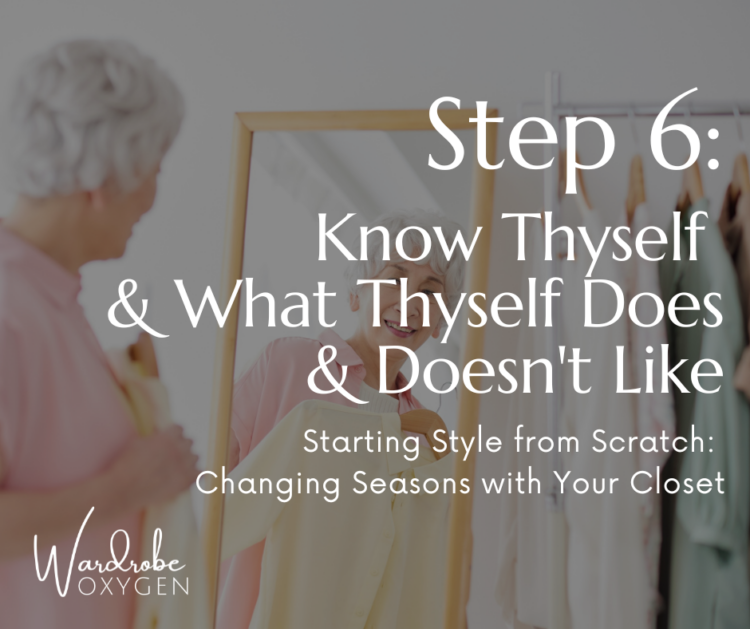
Step 6: Know Thyself and What Thyself Does and Doesn't Like
The things that aren't quite right, why aren't they?
- Is it the wrong size?
- Can a tailor change that size?
- Do you like the item enough to find a replacement in your current size?
- Do you even need or like this item?
- Do you feel that now you're more comfortable in a different silhouette?
- Can that be changed by a tailor or do you need to find a replacement?
- Note what feels wrong. The length? The width? The rise? The location of pockets?
- Does the color feel wrong?
- Is the color or fabric wrong, or maybe it's the shoes or the styling?
- Try the item with an unexpected color pairing. 2025 is about unexpected color combos, and this is a quick way to give fresh life to items in your closet.
- Again, note what feels wrong. How does the color make you feel?
Ask these kinds of questions as you do your try-ons and write down your responses so you remember. There is no point in shopping for new if you can't assess why the existing items are not doing it for you.
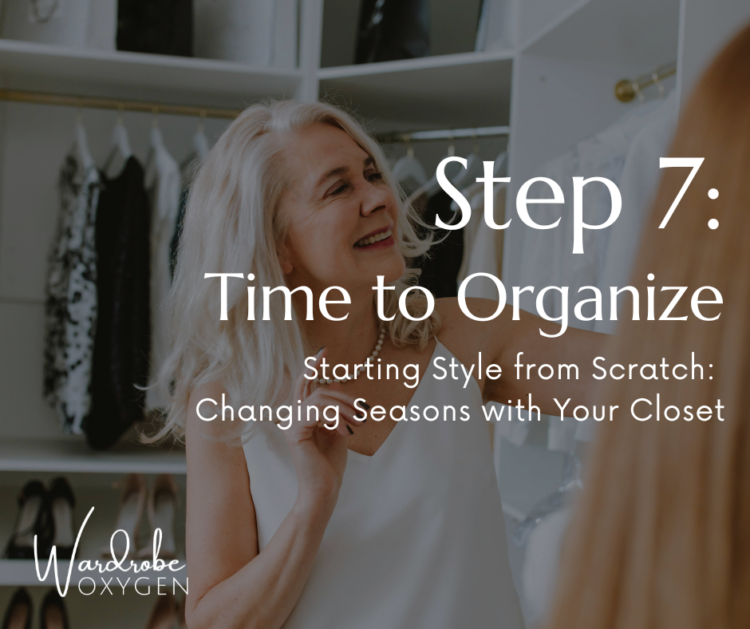
Step 7: Organize
As you refill your closet, do it with intention. I recommend organizing by category (all pants, all shirts and blouses, all skirts, all dresses, etc.) and then by color (I do rainbow, but you do whatever makes you happy). Also, having a consistent style of hangers reduces the chance of something getting lost in the sauce. An organized closet makes it so much easier to get dressed each day and see where you may have needs.
- For example, when I did my audit last spring, I saw I had only one pair of lighter-weight pants. I liked the Madewell pants I had left over from the previous year, so I went back to Madewell and found the same pants and bought them in a second color that I could see from my organized closet would coordinate well.
- Another example is with my closet from fall to winter. I realized I needed something chunky for footwear to wear with my wide-leg jeans and pants. My loafers and sleek ankle boots didn't feel right. So, while I still had warm enough weather to rock my sneakers and sandals, I thoughtfully shopped to find a pair of brown clogs and black engineer boots that would keep my feet warm but still comfortable.
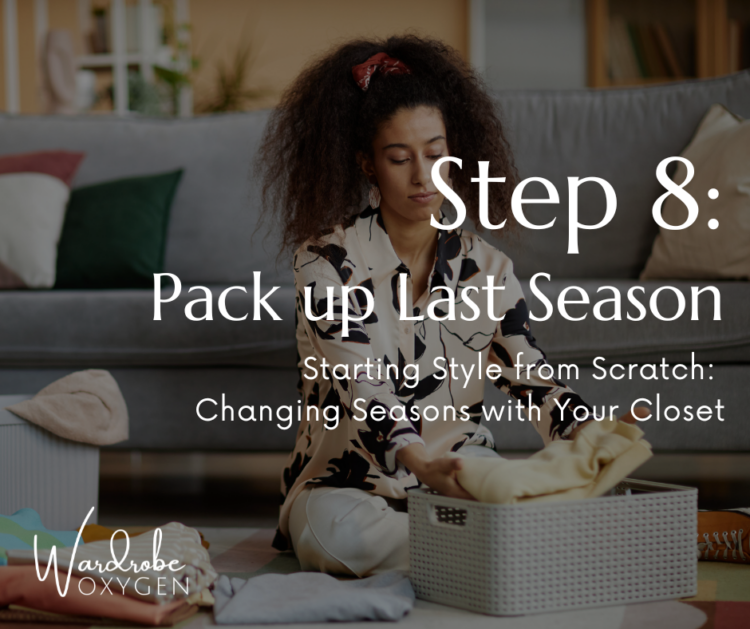
Step 8: Pack up Last Season
Now it's time to pack up that which is no longer appropriate for the weather. The kinder you are to your clothes when storing them, the more likely you will enjoy wearing them in the future.
- Everything must be clean. Body oils and tiny fragments of food attract pests. Stains can set in over time and be impossible to remove. Follow the laundry instructions so the pieces remain in the best condition; the goal is to buy less and proper clothing care extends the life of them.
- Everything must be repaired. Did you unpack items this season that were missing buttons or damaged? Pull out shoes that are scuffed with peeling soles? Sucks, doesn't it? Be kind to your future self; repair items before storing; if it's not repairable, it's not worth keeping.
- Store Appropriately to the Garment. Sweaters, knits, jeans, and casual pants do well being folded carefully and put in shrink bags or storage bins. Coats and blazers may do better in a garment bag in the back of the closet. Again, check out my tips on how to care for your closet.
- Optional: Make a List. I've started making lists of what I pack up so I have a reference when I am thrifting, Poshmarking, or considering fabulous fashion scores throughout the year. Sure, that cashmere sweater is a steal, but if I already own the same silhouette in two colors, do I need a third? Wait, I don't need relaxed flare jeans; I already have straight flares that have the same effect. The time spent on lists may save you money in the long run.
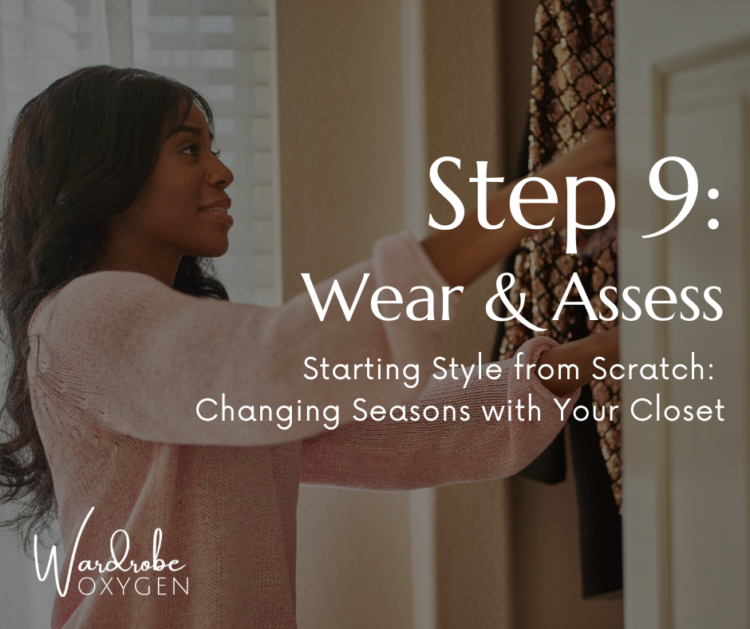
Step 9: Wear and Assess
Before you go shopping, wear what you own. After a couple of weeks, you'll get a true image of what you need to complete your closet for the current season. It's not easy; your looks might be not quite right, but that's better than shopping too quickly and ending up with what's not quite right.
Again, this is a good time to take notes. I use the app Day One to track things like this so I can look back at the date and remember that was a day it rained, or I had a coffee meeting with a brand, or I had a delicious and hearty meal the night before that affected the fit of the pants.
After these weeks, you'll not only know what holes you have in your wardrobe, but get a better feel of who you are this year. We women are constantly learning, experiencing, changing, growing, and reducing the number of f*cks we have. This affects our personal style.
It doesn't mean you need a closet overhaul, but maybe this year, you're more a purple sneaker person than a white sneaker person. Or maybe this year you have the confidence to tuck, which may require belts, or a top or two that tucks better, or a different shoe to balance the silhouette. Just like playing with combinations of colors and garments, you may find just one or two items will transform your entire closet.
Make a list, adjust it through these weeks, and do some virtual window shopping to see what is out there that may fit the bill. When virtual window shopping, there is no need to stick to your typical brands and price points; you're looking for concepts that will work, and you're not shopping that very day.
Save links or images, make an album or paste pictures into your notes, you're creating your own seasonal vision board!

Step 10: Shop Thoughtfully
You have just proven that you don't need anything to avoid leaving the house half-undressed. You've shown that you have time to shop thoughtfully. You know what you need, now let's find it.
- So you bookmarked a pair of $2k flats and you wouldn't spend that on an entire closet of clothes. What terms are used in the description of the flats? The color, the textile, the style name, the toebox style, etc. You can use these terms to find a similar look for less.
- You know you need a pair of white straight-leg jeans but don't know what length to get to work with your current shoe wardrobe. Again, go to your search engine and search “white straight-leg jeans with [style of shoes].” Check out the images that pop up; this can help you narrow down things like hem length, silhouette, and fabric.
- Begin looking at your tried and true retailers for what you need. You'll be more likely to find the fit and price point that is comfortable. If you're missing out, again, go to your search engine and put in the descriptors you've learned from your assessment. “Black linen wide-leg pants,” or “tan cotton blazer for women,” or “navy knee-length work dress with short sleeves.” To be honest, this is often what I do when crafting my capsule wardrobes!
This may sound like a lot of work, but each season, this will get easier. You may make mistakes, but mistakes are a way to learn and grow. The goal isn't to get through a season, but to consistently build a wardrobe that provides you with comfort and joy, with the majority of it looking and feeling great year after year.
For more advice on building and maintaining a wardrobe that works with the woman you are now, check out my Starting Style from Scratch series!



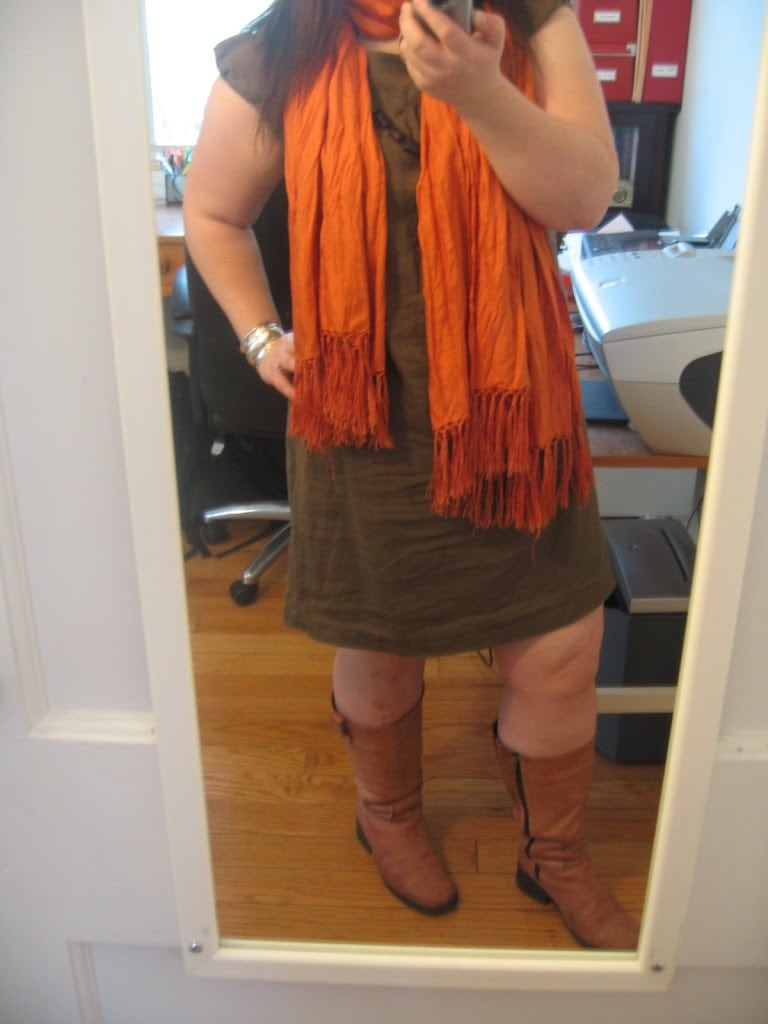
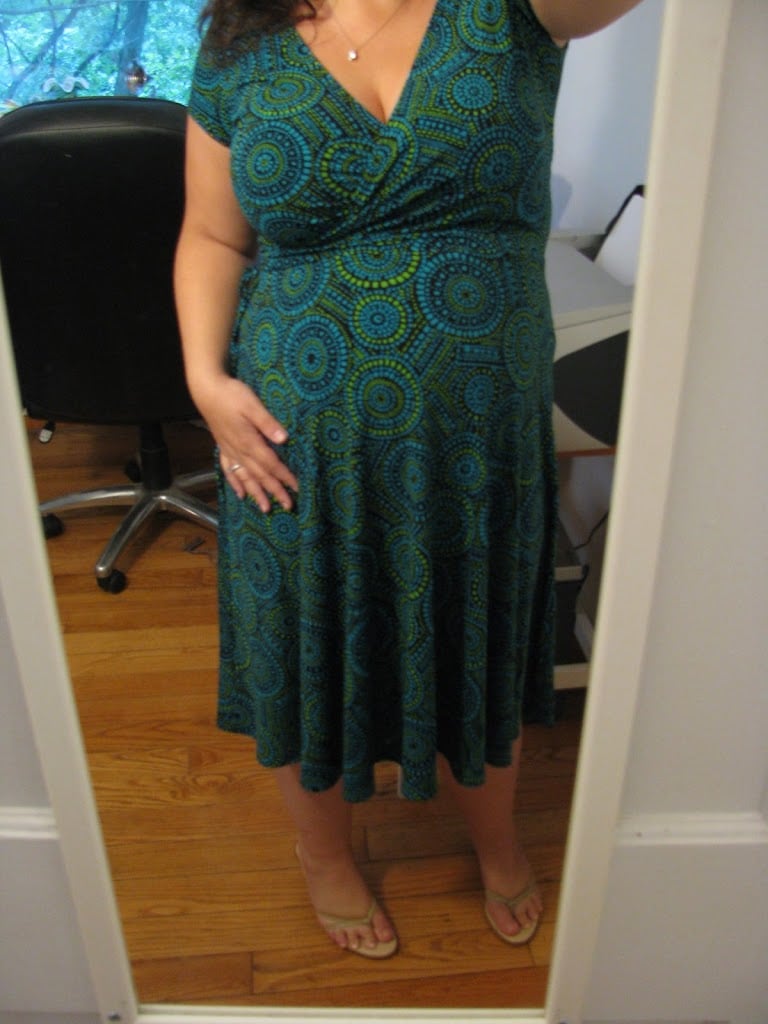
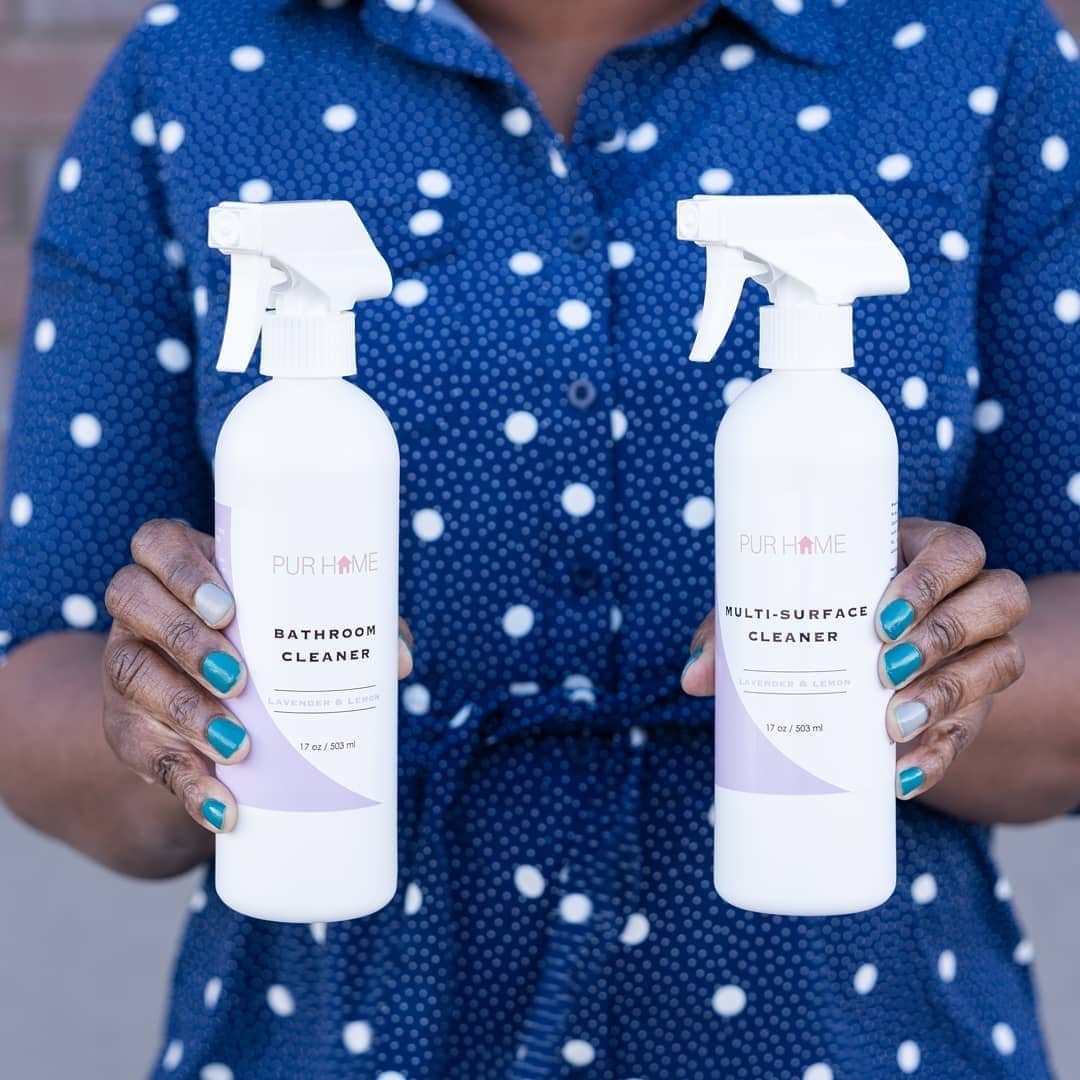

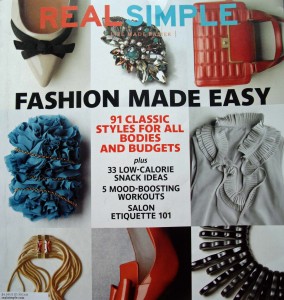
Thank you especially for the Google Fu tips at the end – don’t know why, but I’ve never thought to search for *two* clothing items at a time (i.e. X clothes with Y shoes)!
Thank you so much for taking the time to break this process down step-by-step. It is so very helpful and I appreciate the work you’ve done to make this available to us!
I am so glad you find it helpful!
I realize this is a changing seasons assessment, but I’d love to see you do a changing lifestyles one. As I pull out last spring/summer’s clothes, I see a pile of clothing that is no longer appropriate for where I now live, what I now do, and what I hope to accomplish this year. My entire life changed and nowhere do I see it more than in my closet. Accepting what I currently need vs. what I used to have is a HUGE undertaking. I need help and inspiration!
I would guess that the same principles above would still apply – wear what you can, make notes on why it works (or doesn’t), & then find the items that would plug those wardrobe holes?
I love this idea, Bette and am working on it!
This is so helpful—thank you. I have been switching things around in my closet & ended up finding several items that I sold to Clothes Mentor & several more that are going to a local donation center. I’m disappointed in myself for, yet again, buying clothes & keeping clothes that I tried to “make work” even though I didn’t love them. This always happens when my weight fluctuates, which is even more frustrating lately, thanks to perimenopause.
One good thing about going through my closet is that I put together 2 outfits for an upcoming trip that involves a concert. I’m going with black pants but found 2 tops that can work, depending on the weather that evening and the shoes I’ve got will work for both as well. It felt good to create those outfits completely from clothes & shoes already in my closet!
Oh, thank you for pointing out that our bodies fluctuate over the years, so it’s incredibly hard to buy & keep certain clothing “basics” that will last for years. Of course that’s true with some items but definitely not all. Ok, this is too long—sorry!
Alison …Thank you! You do a fantastic job on all of your articles! The time and research you spend is amazing and greatly appreciated.
My closet is scary!
I am so glad you find it helpfuL!